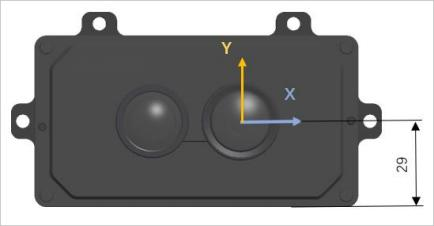2025-11-13
In recent years, the automotive industry has witnessed significant advancements in technology, particularly with the integration of Edge Computing AI boxes equipped with Algorithm Neural Processing Units (NPUs). These systems play a crucial role in enhancing the efficiency and intelligence of automotive electronics, offering numerous benefits that can transform the driving experience.
Edge Computing refers to the practice of processing data near the source of generation rather than relying on a centralized data center. This reduces latency, enabling real-time decision-making essential for modern vehicles. An AI box with Algorithm NPU takes this a step further by providing specialized computational power designed to handle complex algorithms efficiently. For automotive applications, this means that various functions—from advanced driver-assistance systems (ADAS) to in-vehicle infotainment—can operate faster and more reliably.
One of the key advantages of using an Edge Computing AI box with Algorithm NPU in automotive electronics is enhanced performance. These systems can analyze data from various sensors instantly, allowing for immediate responses to dynamic driving conditions. For instance, in the case of automatic braking systems, data processed by the NPU can detect obstacles and react faster than traditional computing methods, ultimately improving safety.
Furthermore, the use of Algorithm NPUs enables the implementation of sophisticated machine learning models that can learn from driver behavior over time. This allows for personalization of vehicle settings, resulting in a more tailored driving experience. For instance, the system can adjust seat positions, climate controls, and navigation preferences based on past usage patterns.
Security is another critical aspect where Edge Computing AI boxes shine. By processing data locally, sensitive information does not need to be transmitted over the internet, thereby minimizing exposure to cyber threats. This is particularly important in the automotive sector, where data privacy is a growing concern among consumers.
Moreover, these systems contribute to better fuel efficiency and reduced emissions by optimizing engine performance based on real-time data analytics. By analyzing driving patterns and environmental conditions, Edge Computing AI boxes can provide insights that lead to more eco-friendly driving habits.
In conclusion, the integration of Edge Computing AI boxes with Algorithm NPUs represents a significant advancement in automotive electronics. Their ability to process data in real-time, enhance vehicle safety, and offer personalized experiences not only improves the overall performance of vehicles but also paves the way for a more connected and intelligent automotive future. As the automotive industry continues to evolve, these technologies will undoubtedly play a pivotal role in shaping the next generation of vehicles.
Edge Computing refers to the practice of processing data near the source of generation rather than relying on a centralized data center. This reduces latency, enabling real-time decision-making essential for modern vehicles. An AI box with Algorithm NPU takes this a step further by providing specialized computational power designed to handle complex algorithms efficiently. For automotive applications, this means that various functions—from advanced driver-assistance systems (ADAS) to in-vehicle infotainment—can operate faster and more reliably.
One of the key advantages of using an Edge Computing AI box with Algorithm NPU in automotive electronics is enhanced performance. These systems can analyze data from various sensors instantly, allowing for immediate responses to dynamic driving conditions. For instance, in the case of automatic braking systems, data processed by the NPU can detect obstacles and react faster than traditional computing methods, ultimately improving safety.
Furthermore, the use of Algorithm NPUs enables the implementation of sophisticated machine learning models that can learn from driver behavior over time. This allows for personalization of vehicle settings, resulting in a more tailored driving experience. For instance, the system can adjust seat positions, climate controls, and navigation preferences based on past usage patterns.
Security is another critical aspect where Edge Computing AI boxes shine. By processing data locally, sensitive information does not need to be transmitted over the internet, thereby minimizing exposure to cyber threats. This is particularly important in the automotive sector, where data privacy is a growing concern among consumers.
Moreover, these systems contribute to better fuel efficiency and reduced emissions by optimizing engine performance based on real-time data analytics. By analyzing driving patterns and environmental conditions, Edge Computing AI boxes can provide insights that lead to more eco-friendly driving habits.
In conclusion, the integration of Edge Computing AI boxes with Algorithm NPUs represents a significant advancement in automotive electronics. Their ability to process data in real-time, enhance vehicle safety, and offer personalized experiences not only improves the overall performance of vehicles but also paves the way for a more connected and intelligent automotive future. As the automotive industry continues to evolve, these technologies will undoubtedly play a pivotal role in shaping the next generation of vehicles.
Related News













